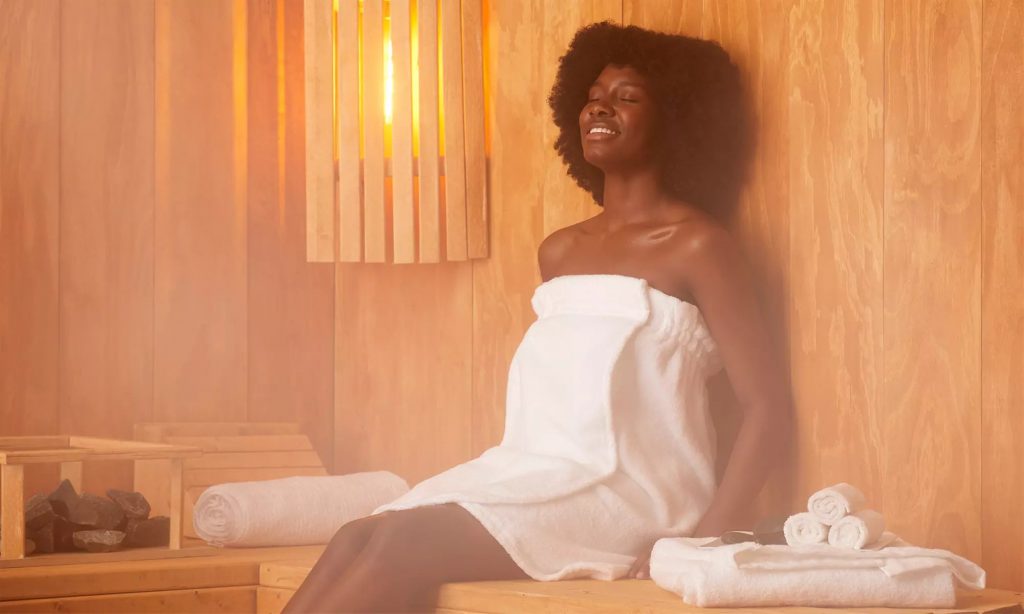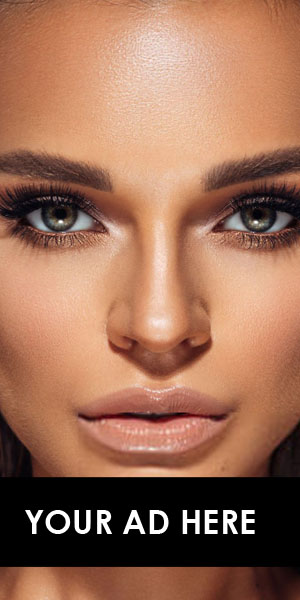Health
Is Self-Care Just Marketing? The Truth Behind Beauty and Mental Health

In today’s world, self-care feels like both a necessity and a trend. One minute, you’re watching a video about setting boundaries and prioritizing your mental health; the next, you’re being sold a rose quartz face roller, a $50 candle, and a “detox” bath soak. It’s hard not to wonder, is self-care just a marketing scheme wrapped in pastel colors and wellness buzzwords? Or is there something real beneath the skincare masks and yoga poses?
Let’s unpack the truth behind the self-care industry, how beauty gets tangled with mental health, and where the line lies between genuine care and clever branding.
The Rise of Self-Care Culture
Self-care didn’t start with beauty brands or Instagram influencers. Its roots trace back to medical and psychological practices where patients, especially those dealing with chronic illnesses or mental health struggles, were encouraged to take small, manageable steps to support their well-being.
But in the last decade, the concept exploded into mainstream culture. Thanks to social media, the term “self-care” is now plastered on everything from luxury skincare kits to guided journaling apps. It’s become a lifestyle, a hashtag, and a billion-dollar industry.
And here’s the twist: while some of it is absolutely beneficial, a lot of it is also branding.

What is painted Self-Care
Beauty Products in the Name of Mental Health
We’ve all seen it. A brand drops a new face mask and calls it a “mental reset.” A beauty influencer shares her “healing” skincare routine as a way to deal with anxiety. And while there’s nothing wrong with indulging in a nighttime ritual, the problem starts when beauty products are sold as mental health solutions.
Using a body scrub or serum can feel good. It can be soothing, calming, and a part of how you unwind. But it’s not therapy. It’s not a substitute for sleep, real emotional processing, or reaching out for help when you need it.
And yet, more and more products are blurring that line, offering a bubble bath when what someone might truly need is a therapist, medication, or meaningful connection.

Self-care ‘looks like’
The Problem With Commodifying Self-Care
When self-care becomes something you have to buy, it becomes less accessible and more performative.
Think about it. A young woman scrolling through TikTok sees countless creators sharing “self-care hauls” filled with expensive items. She starts to believe that unless she has the right candle, the right skincare fridge, the right aesthetic journal, she’s not really taking care of herself.
And that’s not just unfair, it’s harmful. Because the real essence of self-care isn’t glamorous. It’s setting boundaries. It’s turning off your phone. It’s saying no, drinking water, going to therapy, going for a walk, getting some sleep, asking for help. Most of these things cost little to nothing, but they rarely make it into the curated Instagram grid.

Self-care routine
The Beauty Industry’s Smart Play
To be fair, the beauty industry caught onto something important: people are tired, anxious, and overstimulated. Mental health struggles are more openly talked about now than ever before. And for the first time in a long time, society is collectively trying to slow down and prioritize wellness.
So brands saw an opportunity, and they ran with it.
They swapped “anti-aging” for “self-love,” “pampering” for “healing,” and suddenly, skincare isn’t about vanity anymore, it is about vitality. But let’s not ignore that a lot of it is strategic. The language of self-care is being used because it sells.
And unfortunately, that can water down the deeper, more complex conversations we need to have about mental health.
What Real Self-Care Actually Looks Like
Self-care doesn’t have to be bought. It doesn’t have to be trendy. And it certainly doesn’t have to be perfect.
Real self-care looks different for everyone. It could mean:
Turning off work emails after 6pm.
Getting honest about your burnout.
Going to therapy or joining a support group.
Saying “no” without guilt.
Eating actual meals, not just coffee and snacks.
Moving your body in a way that feels good, not punishing.
Sure, a skincare ritual can be part of it. So can candles and bubble baths. But they should support your well-being, not define it.

Feeling nature is self-care
So Is Self-Care Just Marketing?
Partly, yes. The term has been commercialized, aestheticized, and in some cases, diluted into something unrecognizable. But at its core, self-care is still deeply important and valid.
The trick is learning to separate what you’re being sold from what you actually need.
If a product helps you feel grounded, relaxed, or joyful, go for it. But don’t let anyone convince you that healing can only happen if you can afford it. Don’t let marketing turn self-care into another source of pressure.
You don’t have to spend money to take care of yourself. Sometimes, the most radical act of self-care is doing what’s best for your mind and body, even if no one else sees it.

Reading is self-care
Self-care isn’t a sheet mask. It’s not a cute planner. It’s not a trend. It’s the everyday practice of showing up for yourself, whether that means resting, crying, journaling, stretching, or speaking up for what you need.
So the next time someone tells you to buy something in the name of self-care, pause and ask yourself:
Is this helping me feel better, or just helping someone make a sale?
Because when we strip away the filters and fluff, real self-care is still here. Quiet, personal, and powerful.
Read Also: Simple Habits That Naturally Boost Your Mind and Body
Health
3 Snacks to Eat That Help with Sleep

Many South Africans struggle to nod off at a reasonable hour, even after switching off from work or putting down their phones. While stress, late dinners, or overthinking often take the blame, what you snack on before bed can make a real difference. These three options rely on nutrients your body already uses and are quick to prepare when you’re too tired to cook a proper meal.

Photo Credit – Google
A small bowl of oats with warm milk is a simple option many people overlook. Oats release energy slowly, helping to keep your blood sugar stable through the night. Warm milk contains tryptophan, an amino acid that helps the body produce melatonin and serotonin, hormones that regulate sleep. Keep your portion light. You’re not trying to feel full, just preventing that sudden hunger that can wake you early.

Photo Credit – Google
Another practical choice is a banana with a small handful of almonds. Bananas offer magnesium and potassium, which support muscle relaxation, while almonds bring healthy fats and a touch of protein. This combo sits comfortably in the stomach without feeling heavy, helping you avoid waking up in the middle of the night hungry.

Photo Credit – Google
If you prefer something cold and fast, Greek yoghurt with a teaspoon of honey works well. The yoghurt provides casein, a slow-digesting protein that keeps your body nourished overnight, while the honey adds just enough natural sugar to prevent a dip in blood glucose. It’s simple, quick, and fridge-ready.
None of these snacks will make you fall asleep instantly, but they help your body stay balanced before bed. They’re affordable, widely available in South African supermarkets, and easy to assemble when you’re ready to call it a night. Pair them with a calmer evening routine, such as dimming the lights, reducing screen time, and winding down earlier, and you may find it easier to fall asleep and stay asleep longer.
Health
Understanding Your Breast Cancer Risk

Many women are affected by breast cancer globally. However, its causes can differ. Understanding the risk factors helps protect your health. Here are some risk factors linked to breast cancer and how to reduce them.
Age and Family History

Young african afro woman holding cancer ribbon standing over isolated pink background very happy pointing with hand and finger to the side : IStock
The older a woman gets, the higher her risk of developing breast cancer. Women over 50 face an increased risk of having breast cancer. Aside from age, your family history also influences your risk. If anyone in your family has a history of cancer, consider screening.
Lifestyle Choices
Your lifestyle is another factor. Bad lifestyle choices like alcohol consumption, high sugar intake, and not getting enough exercise are dangerous. Try to watch your weight, as obese people are at higher risk. Smokers are also at risk of developing the disease.
Read Also : Perimenopause: What No One Tells You
Hormones and Reproductive Factors

African american senior woman pointing at breast cancer awareness ribbon on pink t-shirt. identity and breast cancer awareness concept: istock
Hormonal factors influence risk too. Women who experience early or late menopause should monitor their health. Too much oestrogen can slightly raise the risk. If you use hormone replacement therapy frequently, your risk may increase.
Breast Density
Women with dense breast tissue are also at risk. Dense tissue can slightly increase the risk and make it hard to detect cancer. When this happens, doctors may advise undergoing additional imaging tests.
How to Reduce Risk

Smiling young woman making heart shape with hands showing pink ribbon for breast cancer awareness : Istock
Factors like age and family history can’t be avoided. If you are above 50 or have a family with history of the condition, watch what you eat. Also, eat fruits and include vegetables in most of your foods. Meanwhile, don’t forget to work out regularly. You could also enrol in a gym or just design a way to keep fit around your house.
Why Early Detection is Important
Women are advised to undergo regular screening to detect early signs of breast cancer. Early detection is best as it promotes quick treatment . Women over 50 are advised to have a mammogram every one to two years. Those with higher risks may need to start earlier.
These risk factors are not exclusive and don’t mean you will get breast cancer. There are women who develop it without these risks detection. Regular check-ups and early detection make it easier to treat. Contact your doctor to know your risk and discuss preventive options. Knowing your breast cancer risk gives you the chance to make healthy choices.
Health
Natural Ways to Manage Endometriosis Symptoms

Managing endometriosis naturally is possible with the right lifestyle choices. While there are recognised clinical treatments. However, these natural approaches shouldn’t replace medical treatments. Below are some natural ways to manage this condition.
Take Anti-Inflammatory Foods
 Endometriosis comes with much pain, but with the right diet, you can find relief. Eat plenty of vegetables, fruits, and fibre-rich food. Also, foods rich in Omega-3s like shrimp and salmon are ideal choices. You should cut down on sugar and processed foods as they can worsen your condition.
Endometriosis comes with much pain, but with the right diet, you can find relief. Eat plenty of vegetables, fruits, and fibre-rich food. Also, foods rich in Omega-3s like shrimp and salmon are ideal choices. You should cut down on sugar and processed foods as they can worsen your condition.
Daily Exercise
Another natural way to manage endometriosis is regular exercise. Jogging, cycling, and walking are gentle aerobic options. You can try yoga and meditation to keep your mind relaxed. If this can’t be done daily, three times a week is enough for good results.
Heat Therapy

If you have aches or muscle pain, consider heat therapy. This includes taking a warm bath or placing a hot water bottle on your abdomen. This is a simple way to relieve discomfort. There are effective heat therapy tools available to help manage the pain.
Read Also : Should You Work Out in Cold Weather
Stress Management Strategies
Stress is another factor that could make your condition worse. People with these symptoms are advised to relax more. Try out various meditation techniques to keep your mind calm. Also, spending time with loved ones, and taking some time off work can bring down your stress levels.
Watch Your Weight

If you are overweight or battling with obesity you might have to shed some weight. Excess body fat can make the symptoms harder to manage. So you need to keep an eye on your weight and hormonal balance. Engage in regular physical activity. and avoid alcohol and caffeine to keep your weight in check.
Herbal Supplements
These can also provide some form of relief to those with endometriosis. Consider supplements rich in ginger, green tea, and turmeric. They have potent anti-inflammatory properties. which makes them a good option. However, speak to a qualified medical practitioner before using them.
Final Thoughts
To manage endometriosis, you need to be patient. There are no quick ways to get rid of this condition. You will need to make some lifestyle and diet changes to see meaningful results. The natural ways suggested above can help improve your overall well-being when used alongside medical advice.
-

 Fashion5 years ago
Fashion5 years agoIncredidibly sexy; Willow Smith, 20, wore lingerie for the first time!
-

 Beauty4 years ago
Beauty4 years agoWillow Smith: The New Face For Mugler’s Alien Goddess Fragrance!
-

 Celebrity News4 years ago
Celebrity News4 years agoRihanna and A$AP Rocky, so cozy while filming new music video at new york!
-

 Celebrity News6 years ago
Celebrity News6 years agoAmber Rose and Her New Face Tattoo!
-

 TV4 years ago
TV4 years agoMadonna’s ‘Madame X’ Documentary announced for October 2021 with Paramount
-

 Fashion4 years ago
Fashion4 years agoKylie Jenner’s Business Outfit!
-

 Fashion5 years ago
Fashion5 years agoParis Hilton, The New Face of Lanvin Spring-Summer 2021
-

 Celebrity News4 years ago
Celebrity News4 years agoNormani “Wild Side” feat Cardi B















